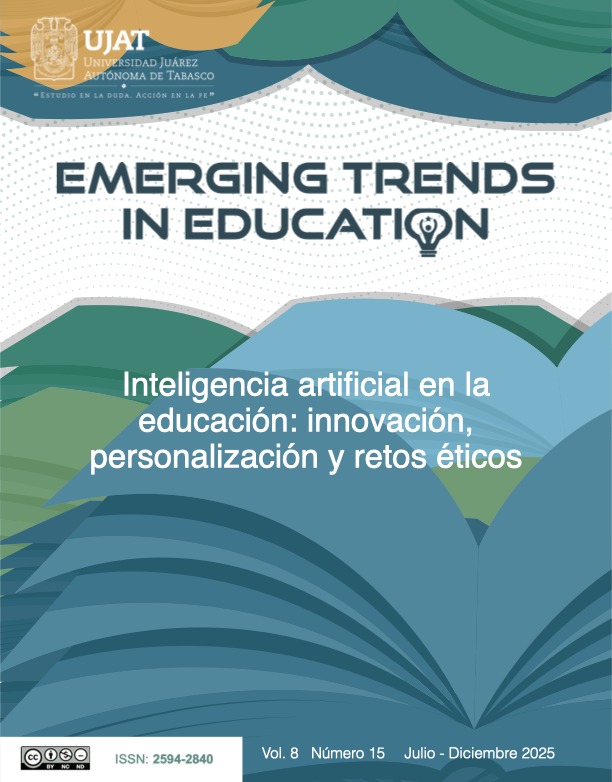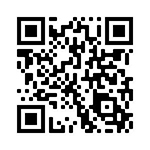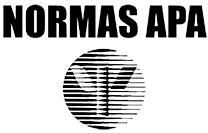El futuro de la expresión creativa a través de la educación artística profesional: inteligencia artificial y arte humano
DOI:
https://doi.org/10.19136/etie.v8n15.6333Palabras clave:
Inteligencia Artificial en la Educación, creatividad humana, implicaciones éticasResumen
Los académicos de las instituciones de educación superior donde se imparten carreras en el ámbito creativo como lo son Artes visuales, Artes Plásticas, Medios Audiovisuales, Animación y Efectos Visuales, Arquitectura, Cinematografía, Comunicación y otras, tienen frente a sí la enorme responsabilidad de formarse y prepararse para afrontar los desafíos de esta transformación tecnológica. Es imperativo analizar de forma crítica como la Inteligencia artificial y las nuevas tecnologías pueden enriquecer y transformar el campo del arte. A su vez, es imperativo analizar los riesgos y las dificultades que conlleva el uso de nuevas tecnologías. Esta ponencia dirige la reflexión hacia la revalorización de la creatividad humana y la expresión artística por medio del estudio de los algoritmos que imitan la creatividad humana empleados en la inteligencia artificial. Con este propósito se elabora una revisión sistemática de literatura para identificar las diferencias que existen entre la creatividad humana y el entrenamiento de los algoritmos de la IA. Creemos que la Academia debe constituirse como espacio de reflexión acerca del impacto de la Inteligencia Artificial en el trabajo creativo. Asimismo, las nuevas generaciones de profesionales deben poseer elementos que les permitan reconocer, apreciar y defender el valor intrínseco de su trabajo creativo, que es insustituible. Un análisis de las consecuencias éticas del uso de la inteligencia artificial generativa en el campo creativo permitirá detonar discusiones pertinentes acerca de los derechos de los artistas y el valor de la obra de arte original, que orienten acciones hacia marcos normativos que protejan las creaciones originales.
Referencias
Acha, J. (2005). Acha Juan Expresión y apreciación artísticas. Trillas. https://www.academia.edu/41577364/Acha_Juan_Expresion_y_Apreci
Ackermann, T. J. (2020, November 29). GPT-3: A robot wrote this entire article. Are you scared yet, human? https://www.bgp4.com/2020/11/29/gpt-3-a-robot-wrote-this-entire-article-are-you-scared-yet-human/
Aguilera, A. (2024, August 13). Teoría asociacionista de la creatividad. Psocología y Mente. https://psicologiaymente.com/inteligencia/teoria-asociacionista-creatividad
Alieva, I. (2023). How American Media Framed 2016 Presidential Election Using Data Visualization: The Case Study of the New York Times and the Washington Post. Journalism Practice, 17(4), 814–840. https://doi.org/10.1080/17512786.2021.1930573
Al-Khazraji, L. R., Abbas, A. R., & Jamil, A. S. (2023). A Systematic Review of Deep Dream. Iraqi Journal of Computer, Communication, Control and System Engineering, 23, 192–209. https://doi.org/10.33103/uot.ijccce.23.2.15
Anantrasirichai, N., & Bull, D. (2022). Artificial intelligence in the creative industries: A review. Artificial Intelligence Review, 55(1), 589–656. https://doi.org/10.1007/s10462-021-10039-7
Ascott, R. (2000). Art, Technology, Consciousness: Mind@large (1st ed). Intellect Books Ltd.
Boden, M. A. (2009). Computer Models of Creativity. AI Magazine - Wiley Online Library, 30(3), 23–34. https://doi.org/aimag.v30i3.2254
Boden, M. A. (2018). Thinking intelligently about artificial intelligence. The British Academy. https://www.thebritishacademy.ac.uk/publishing/review/34/british-academy-review-34-thinking-intelligently-about-artificial-intelligence/
Cohen, P. (2016). Harold Cohen and AARON. AI Magazine, 37(4), 63–66. https://doi.org/10.1609/aimag.v37i4.2695
Cota-Rivera, E. I., González Correa, M. E., Bernal Marín, L. A., Marquez Montenegro, M. Y., Herrera, A. M., & Martinez Martinez, M. A. A. (2024). Transforming Education With the Power of Artificial Intelligence: Case Studies. In Ş. Ş. Demir & M. Demir (Eds.), Advances in Higher Education and Professional Development (pp. 113–140). IGI Global. https://doi.org/10.4018/979-8-3693-1666-5.ch006
Esling, P., & Devis, N. (2020). Creativity in the era of artificial intelligence (No. arXiv:2008.05959). arXiv. https://doi.org/10.48550/arXiv.2008.05959
FasterCapital. (2024). Exploración Creativa. FasterCapital. https://fastercapital.com/keyword/exploración-creativa.html
Ferrer, R. (2018). Mágica belleza. El pensamiento mágico como fundamento original de la teoría del arte [Ph.D. Thesis, Universitat de Girona]. In TDX (Tesis Doctorals en Xarxa). https://www.tdx.cat/handle/10803/664425
Gaki. (2024). Los Algoritmos de la Creatividad – Laboratorio Gaiki. https://gaiki.org/los-algoritmos-de-la-creatividad/
González, M. A. (n.d.). LA CREATIVIDAD Y LA IMITACION EN EL ARTE DEL ENCAJE. Biblioteca Virtual Miguel de Cervantes. Retrieved February 25, 2025, from https://www.cervantesvirtual.com/obra-visor/la-creatividad-y-la-imitacion-en-el-arte-del-encaje/html/
Goodman, D., & Keene, R. (1997). Man versus machine: Kasparov versus Deep Blue. H3 Publications.
Granter, S. R., Beck, A. H., & Papke, D. J., Jr. (2017). AlphaGo, Deep Learning, and the Future of the Human Microscopist. Archives of Pathology & Laboratory Medicine, 141(5), 619–621. https://doi.org/10.5858/arpa.2016-0471-ED
Hassine, T., & Neeman, Z. (2019). The zombification of Art History: How AI resurrects dead masters, and perpetuates historical biases. Journal of Science and Technology of the Arts, 11(2).
Heaven, W. D. (2023). La IA generativa no necesita ser inteligente para amenazar el trabajo creativo. MIT Technology Review. https://sitiosfuente.info/ciencias/29864-ia-generativa-necesita-ser-inteligente.html
Lamers, M. H. (2023). A Computer Scientist’s View on Machine Learning and Creativity. In C. Anutariya & M. M. Bonsangue (Eds.), Data Science and Artificial Intelligence (pp. 325–335). Springer Nature. https://doi.org/10.1007/978-981-99-7969-1_24
Latar, N. L. (2018). Robot Journalism: Can Human Journalism Survive? World Scientific.
Makhmutov, M. T., Varouga, S., & Brown, J. A. (2020). Survey on Copyright Laws about Music Generated by Artificial Intelligence. ResearchGate. https://doi.org/10.1109/SSCI47803.2020.9308449
Mantenga, M. (2022). No soy un robot: Construyendo un marco ético accionable para analizar las dimensiones de impacto de la inteligencia artificial. http://hdl.handle.net/10908/19109
Mapondera, M. (2019, May 10). Dancing with a machine: Bill T. Jones on AI and art. Google The Keyword. https://blog.google/technology/ai/bill-t-jones-dance-art/
Nake, F. (2019). Georg Nees & Harold Cohen: Re:tracing the origins of digital media. In Georg Nees & Harold Cohen: Re: Tracing the origins of digital media. Edition Donau-Universität. https://doi.org/10.25969/MEDIAREP/13340
Newborn, M. (1997). Kasparov versus Deep Blue. Springer. https://doi.org/10.1007/978-1-4612-2260-6
Paiva, M. A. (2024, July 7). La inquietante opinión de Noam Chomsky sobre la Inteligencia Artificial. La Tercera. https://www.latercera.com/tendencias/noticia/la-inquietante-opinion-de-noam-chomsky-sobre-la-inteligencia-artificial/4ZPWD57F45EWVLX5XUB6QURJMA/
Park, S., Bokijonov, S., & Choi, Y. (2021). Review of Microsoft HoloLens Applications over the Past Five Years. Applied Sciences, 11(16), 7259. https://doi.org/10.3390/app11167259
Tatarkiewicz, W. (2002). Historia de seis ideas: Arte, belleza, forma, creatividad, mímesis, experiencia estética (7a. ed. en la Colección Neometrópolis). Tecnos Alianza Editorial.
Yu, Y., Binghong, Z., Fei, G., & Jiaxin, T. (2020). Research on Artificial Intelligence in the Field of Art Design Under the Background of Convergence Media. IOP Conference Series: Materials Science and Engineering, 825(1), 012027. https://doi.org/10.1088/1757-899X/825/1/012027
Zivanovic, A. (2005). The development of a cybernetic sculptor: Edward Ihnatowicz and the senster. Proceedings of the 5th Conference on Creativity & Cognition, 102–108. https://doi.org/10.1145/1056224.1056240
Zulic, H. (2024). How AI can Change/Improve/Influence Music Composition, Performance and Education: Three Case Studies. ResearchGate, 2, 100–114.
Descargas
Publicado
Número
Sección
Licencia
Derechos de autor 2025 Emerging Trends in Education

Esta obra está bajo una licencia internacional Creative Commons Atribución-NoComercial-SinDerivadas 4.0.





























